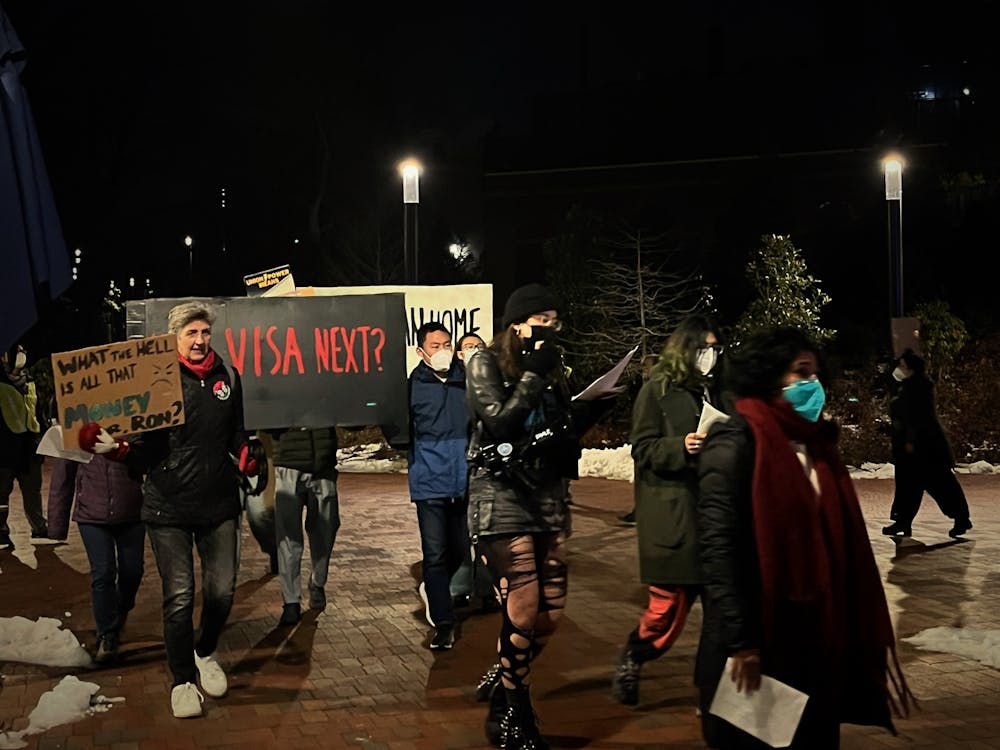At the end of September, the University announced the creation of the Innovation Fund for Community Safety, a $6 million grant to be rolled out over four years to various nonprofits in order to improve wellness and safety in the Baltimore community. The University held a listening session on Oct. 26 with community and nonprofit leaders to gain a deeper understanding of how the grant application and selection process should be structured.
The event was hosted by Vice President for Economic Development Alicia Wilson; Bloomberg School of Public Health Vice Dean for Public Health Practice and Community Engagement Josh Sharfstein; and Bloomberg School of Public Health Dean Ellen MacKenzie.
In an email to The News-Letter, Wilson and Sharfstein argued that the fund as unrelated to the University’s decision in June to delay its plans for a private police force for at least two years.
“The design and operation of the fund is not connected to the University’s pause on developing a small, accountable university police department,” they wrote. “The four-year timeline of the grant making is not correlated with the two-year pause on implementation of the [Hopkins Police Department]. This is an independent, parallel effort focused on supporting community-led efforts.”
However, in an email to University affiliates on Sept. 30, MacKenzie and University President Ronald J. Daniels had explained that the fund was part of the University’s commitment to supporting community-led approaches to improving public safety in light of the pause.
Grant applications will be due early next year. By the end of January, a committee of Hopkins and non-Hopkins community members will review proposals and make recommendations for funding.
The grants were originally planned to range in size from $50,000 to $250,000 to be distributed over the course of four years, but the Innovation Fund leaders were amenable to creating smaller grants based upon recommendations by community groups.
In breakout rooms, nonprofit leaders shared various wants and needs for the grant in the eyes of community groups.
Moira Fratantuono, development and communications director at Wide Angle Youth Media, noted that extremely large grants can be prohibitive to smaller grassroots organizations who may not be able to deliver the same results as a large institution or university.
“When you are talking about safety and wellness, there are a lot of small organizations that are doing really important work in their direct communities,“ Fratantuono said. “You would be surprised with how much you can do with $10,000.”
Nonprofit leaders also stressed that addressing community wellness and safety throughout the entire city of Baltimore is a lofty goal — one that will most likely exceed the cost of $6 million and outlast the four-year time frame of the grant.
In one of the breakout rooms, Nan Rohrer, president at Midtown Community Benefits District, expressed how difficult it can be to navigate all of the University’s moving parts without a pre-established relationship with the administration.
“If you don’t really know Hopkins organizations and programs, you don’t know where your organization can fit as a partner. We have a close working relationship with Hopkins Bayview,“ she said. “Because of our partnership with Bayview, I am able to reach parts of Hopkins that I would never have known about.”
Sharfstein and Wilson emphasized that this input will be critical in creating the Request for Proposal (RFP) draft, which will remain open to suggestions by grant applications.
“We’re compiling all the comments and will use them to guide the development of the draft RFP. Then we’ll put out that draft for comment and revise from there,” they wrote.
Fratantuono highlighted the unique setbacks that small organizations face in accessing funding in an interview with The News-Letter.
“The expectations and the administrative requirements are too great for submitting and reporting,” she said. “The needs of small organizations need to be addressed by the University.”
Additionally, nonprofit leaders called for the principle of innovation — in the grant’s name — to be applied when funding is ultimately allocated.
In a breakout room, Jeremy LaMaster, executive director of FreeState Justice, an LGBTQ advocacy organization, cited examples of direct cash payments to trans women engaging in survival sex work as innovative action.
“We've seen early evidence of just providing cash payments to homeless folks in other communities as being more effective in the long term,” LaMaster said. “I wouldn’t mind there being more pilot projects: What does it look like when you do something traditionally considered as out of the question?”
Fratantuono echoed this sentiment in a follow-up email with The News-Letter.
“When we think about safety and wellness, and we think about opportunities like this, it is important to think about things outside of the box that might be harder to fund,” she wrote. “This is an opportunity for innovation and thinking outside the box, and I hope that sentiment continues.”





